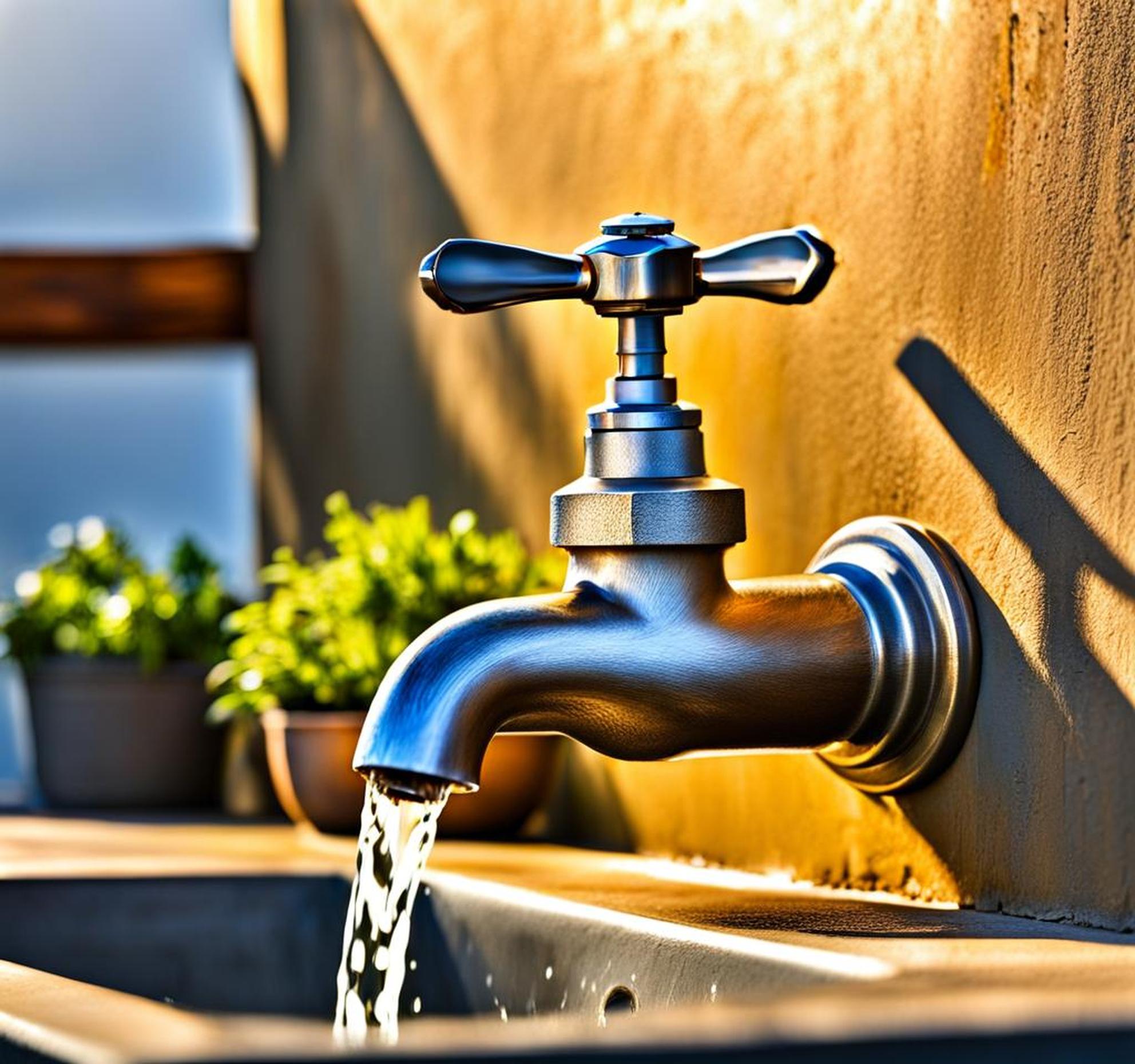If your outdoor faucet’s water flow has slowed to an annoying trickle or drip, it likely needs some TLC. Old outdoor faucets can develop issues like mineral buildup, damaged internal seals, and clogged pipes that restrict water flow. Diagnosing the specific cause and performing the right repairs can restore proper water pressure so you can comfortably utilize your outdoor tap again.
Symptoms of Low Water Flow
There are a few clear signs that indicate your outdoor faucet is suffering from insufficient water flow:
- The water pressure has declined to a slow dribble or light stream.
- Attaching a hose or pressure washer results in inadequate flow.
- Over time, you notice the water flow becoming progressively weaker.
If your outdoor faucet exhibits one or more of these symptoms, there is likely an underlying issue impeding water flow that needs to be addressed.
Potential Causes
There are a few common culprits responsible for decreased water volume from outdoor spigots:
Built-Up Mineral Deposits and Corrosion
Hard water that contains high levels of minerals like calcium and magnesium takes a toll on outdoor faucets over time. As water flows through the faucet, these minerals are left behind, slowly accumulating in layers of limescale on internal components.
The constant exposure to water also leads to corrosion on external and internal metal surfaces. The mineral deposits and corrosion buildup restrict water passageways and outlets, resulting in weaker flow.

Damaged Internal Seals and Washers
The seals and washers inside the faucet mechanism allow water to flow smoothly through the outlet spigot. But these parts degrade with regular use and age. Cracked, warped, or missing seals and washers create internal leaks, diverting water flow away from the spigot opening.
Common seals and washers that need replacement include the stem washer, packing washer, O-rings, and valve seat. As they wear out, water bypasses these parts instead of flowing out the spigot as intended.
Closed Supply Valve or Clog
Most outdoor faucets have a shut-off valve on the water supply line. If this valve is partially or fully closed, it restricts the amount of water delivered to the faucet. Sediment buildup and mineral deposits can also clog the supply valve or pipe, impeding water flow.
Diagnosing the Exact Cause
Pinpointing the specific reason for reduced water flow involves a process of elimination. Here are some steps to diagnose the issue:
- Inspect the supply line and shut-off valve. Make sure the valve is fully open. Check for any kinks or obstructions in the supply line.
- Examine the outdoor faucet exterior. Look for leaking connections or heavy mineral deposits that could indicate interior corrosion.
- Disassemble the faucet to inspect internal seals, washers, O-rings, and mineral buildup. Identify any worn or damaged parts.
- Take note if discolored water is released when initially turned on, which usually signals mineral deposits.
By methodically checking each component, you should be able to determine what is impeding normal water flow.
Cleaning Mineral Buildup
If mineral deposits are the culprit, a thorough cleaning is in order. Here are some tips:
- Soak small faucet parts in vinegar overnight to help dissolve calcium and limescale.
- Use a wire brush or abrasive sponge to scrub visible corrosion on external surfaces.
- Replace parts like seals and washers that are too corroded or calcified to be restored.
In some cases, the interior passageways may be too narrow due to severe mineral deposits. Refurbishing kits containing drills and reamers help clear the airways back to proper precautions.
Replacing Worn Out Seals and Washers
To remedy leaky internal seals and washers:
- Identify the exact replacement parts you need for your faucet model and purchase them.
- Completely disassemble the faucet according to the manufacturer’s directions to access the faulty seals and washers.
- Thoroughly clean the faucet interior before installing the new replacement parts.
- Reassemble the faucet mechanism, being careful to follow the manufacturer’s instructions precisely.
Be sure to test for leaks after reassembly before permanently securing the faucet back on the exterior wall.
Unclogging Supply Valve and Pipes
To address low flow originating from a blocked supply valve or pipe:
- Locate the shut-off valve on the supply line and turn it to the fully open position.
- Disconnect the supply line and flush it out to remove any stuck sediment or minerals if necessary.
- Assess if the supply pipe needs to be replaced due to excessive corrosion or damage.
Getting the supply line flowing freely again will allow full pressure to reach the faucet.
Preventing Future Low Flow Issues
Proactively maintaining your outdoor faucet can help avoid repeat low water flow problems:
- Conduct an annual inspection and cleaning to prevent mineral buildup.
- Replace internal seals and washers regularly before they wear out.
- Install a whole house water softener if you have hard water issues.
- Upgrade to a freeze-proof faucet model designed for outdoor use.
When to Call a Plumber
Certain circumstances do warrant contacting a professional plumber, such as:
- You are unable to diagnose the definitive cause of the low water flow.
- Significant faucet part replacements or repairs are needed beyond your DIY skills.
- The supply valve or pipes require replacement.
A licensed plumber has the expertise to quickly identify and fix the issue to restore full water pressure.
Diminished water flow from an aging outdoor faucet is typically easily remedied with some maintenance and part replacements. Inspecting the supply line, cleaning mineral deposits, replacing worn seals and washers, and clearing any clogs are go-to solutions.
Paying attention to your outdoor faucet and addressing problems promptly, along with preventative maintenance, will restore proper water pressure and volume so you can conveniently utilize your outdoor water supply.
